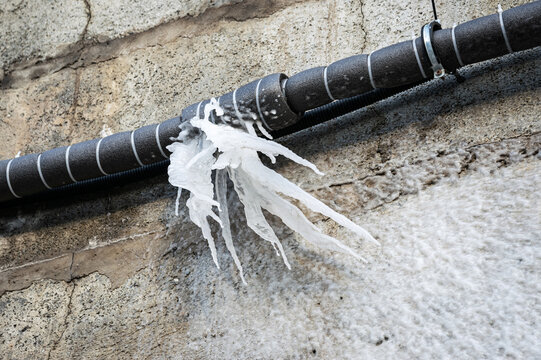How to Defend Plumbing System from Freezing: Key Tips
How to Defend Plumbing System from Freezing: Key Tips
Blog Article
Are you in search of advise concerning Preventing and dealing with frozen pipes?

Winter can ruin your pipes, especially by freezing pipes. Here's how to prevent it from taking place and what to do if it does.
Intro
As temperature levels drop, the risk of icy pipes increases, possibly resulting in pricey repair work and water damage. Recognizing just how to stop icy pipelines is essential for home owners in cool climates.
Recognizing Icy Pipelines
What creates pipelines to freeze?
Pipelines freeze when revealed to temperature levels below 32 ° F (0 ° C) for expanded periods. As water inside the pipelines freezes, it broadens, taxing the pipe walls and possibly causing them to rupture.
Threats and damages
Icy pipelines can result in water disruptions, property damage, and costly fixings. Ruptured pipelines can flood homes and cause considerable architectural damages.
Signs of Frozen Pipes
Identifying frozen pipes early can prevent them from bursting.
How to identify frozen pipes
Search for decreased water flow from faucets, uncommon smells or sounds from pipes, and visible frost on exposed pipelines.
Avoidance Tips
Protecting at risk pipelines
Wrap pipelines in insulation sleeves or make use of warm tape to safeguard them from freezing temperatures. Concentrate on pipes in unheated or exterior locations of the home.
Heating techniques
Keep indoor spaces properly warmed, particularly areas with pipes. Open cupboard doors to allow cozy air to circulate around pipelines under sinks.
Safeguarding Outdoor Pipes
Yard hose pipes and outdoor faucets
Separate and drain pipes garden tubes before winter months. Mount frost-proof spigots or cover exterior taps with shielded caps.
What to Do If Your Pipes Freeze
Immediate actions to take
If you believe frozen pipes, keep taps open to ease stress as the ice thaws. Use a hairdryer or towels taken in hot water to thaw pipes slowly.
Long-Term Solutions
Structural modifications
Take into consideration rerouting pipelines far from outside wall surfaces or unheated locations. Include extra insulation to attic rooms, basements, and crawl spaces.
Upgrading insulation
Purchase top notch insulation for pipelines, attics, and walls. Proper insulation helps maintain regular temperature levels and lowers the threat of icy pipelines.
Final thought
Stopping frozen pipes calls for positive steps and quick feedbacks. By recognizing the causes, signs, and safety nets, home owners can secure their plumbing throughout cold weather.
5 Ways to Prevent Frozen Pipes
Drain Outdoor Faucets and Disconnect Hoses
First, close the shut-off valve that controls the flow of water in the pipe to your outdoor faucet. Then, head outside to disconnect and drain your hose and open the outdoor faucet to allow the water to completely drain out of the line. Turn off the faucet when done. Finally, head back to the shut-off valve and drain the remaining water inside the pipe into a bucket or container. Additionally, if you have a home irrigation system, you should consider hiring an expert to clear the system of water each year.
Insulate Pipes
One of the best and most cost-effective methods for preventing frozen water pipes is to wrap your pipes with insulation. This is especially important for areas in your home that aren’t exposed to heat, such as an attic. We suggest using foam sleeves, which can typically be found at your local hardware store.
Keep Heat Running at 65
Your pipes are located inside your walls, and the temperature there is much colder than the rest of the house. To prevent your pipes from freezing, The Insurance Information Institute suggests that you keep your home heated to at least 65 degrees, even when traveling. You may want to invest in smart devices that can keep an eye on the temperature in your home while you’re away.
Leave Water Dripping
Moving water — even a small trickle — can prevent ice from forming inside your pipes. When freezing temps are imminent, start a drip of water from all faucets that serve exposed pipes. Leaving a few faucets running will also help relieve pressure inside the pipes and help prevent a rupture if the water inside freezes.
Open Cupboard Doors
Warm your kitchen and bathroom pipes by opening cupboards and vanities. You should also leave your interior doors ajar to help warm air circulate evenly throughout your home.

I hope you enjoyed our post on Helpful Tips to Prevent Frozen Pipes this Winter. Thanks a lot for taking a few minutes to read through our post. If you please take the opportunity to share this write-up if you appreciated it. Thank you so much for going through it.
Quote & Schedule Report this page